VVAM Newsletter 91 – 2003
FRIENDS OF THE AIRBORNE MUSEUM
Editors:
Drs. R.P.G.A. Voskuil
C. van Roekel
G.H. Maassen jr.
Newsletter No. 91, August 2003
Translated by Cathrien and Peter Clark
Representative in Great Britain: Niall Cherry, 3 Church Road, Warton, Lancs, PR4 1BD
Tel. home 0177-2632764
Obituary: Mr. Jan ter Horst
Mr. Jan ter Horst passed away in Oosterbeek on 1 August 2003 at the age of 98. For many years Mr Ter Horst had a legal practice in Arnhem. He was a well- known figure, deeply involved in the social, cultural and political life within the region and beyond.
The Ter Horst family came to live in Oosterbeek in 1941, taking up residence in the former vicarage next
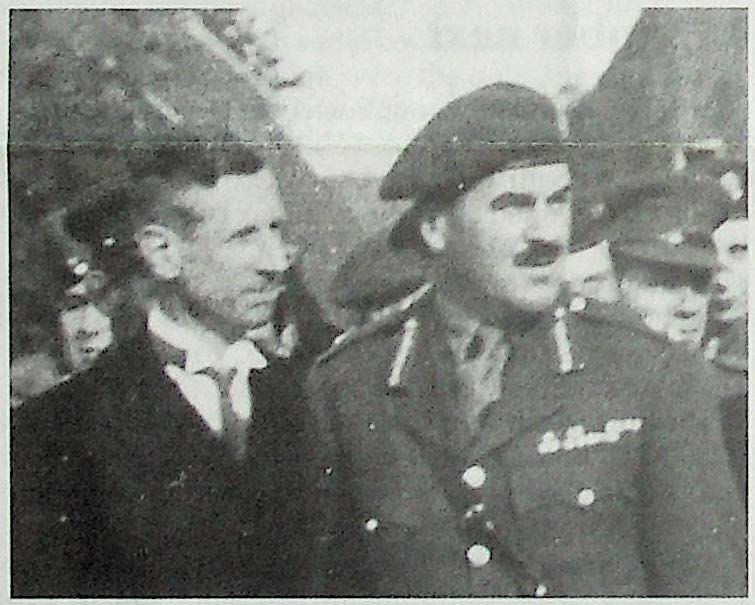 Burgomaster Jan ter Horst and Major General Robert ‘Roy’ Urquhart during the first Airborne Commemoration on 25 September 1945.
Burgomaster Jan ter Horst and Major General Robert ‘Roy’ Urquhart during the first Airborne Commemoration on 25 September 1945.
(photo: R. Voskuil Collection)
to the Old Church in the Lower Village. Mr Ter Horst was not in Oosterbeek when the British airborne landings began on 17 September 1944, and the subsequent heavy fighting in the village prevented him from reaching his home. In the meantime the house had been turned into a ‘Regimental Aid Post’, to which many wounded were brought and treated. Mrs Kate ter Horst, who also had her children to take care of, did everything in her power to relieve to some extent the suffering of the wounded. When the battle ended Mrs Ter Horst and children were forced to leave the village, and Jan ter Horst was at last reunited with his family.
Immediately after the war Mr Ter Horst was appointed interim burgomaster of Renkum Council, a post he held until some time in 1946. The council offices had found a temporary home in the Bilderberg Hotel because the town hall on the Bato’swijk estate had been destroyed. One day in September 1945, Jan ter Horst received news that General Urquhart (who had commanded the British airborne division the year before) was paying an informal visit to Oosterbeek in company with a group of officers. At the time they were visiting the Airborne Cemetery which was still under construction. Jan ter Horst got on his bicycle and set off. When he saw the cars carrying the British officers in Stationsweg he quickly set up a ‘roadblock’ with his bike so as to stop the vehicles. General Urquhart stepped out of his car, and in the conversation that developed Mr Ter Horst emphasised, first and foremost, that despite the lost battle the British were more than welcome in Oosterbeek, something the general had obviously been uncertain of.
In the video documentary ‘Blijvend in Herinnering’ (Forever Remembered), produced in 1989 by Bal Video Produkties of Oosterbeek, both Mr Ter Horst and General Urquhart talked extensively about their first meeting. This meeting resulted in a joint plan for a memorial service to be held at the military cemetery. In fact they laid the foundations for the annual airborne commemoration. The original Order of Service then established is still used today in a virtually unchanged form.
In post war Oosterbeek Mr Ter Horst served for many years on the Renkum municipal council (representing the PvdA, the Dutch Labour Party) and put his mark on many issues, including the reconstruction of the villages.
On 21 February 1992 he lost his beloved wife Kate in a tragic motor accident. Jan himself was seriously injured but recovered after a long rehabilitation period.
Jan ter Horst was a friendly, warm-hearted man, deeply interested in all forms of culture, but in particular in his fellow beings. He enjoyed exchanging views with others on all sorts of subjects, preferably seated in his spacious and comfortable study with its view of the garden and the flood plains of the Rhine.
He was wished farewell during an impressive memorial service in the Old Church in Oosterbeek on 5 August.
(Robert Voskuil)
In Memoriam: Father Dijker
Another man who played a major part in the annual memorial service at the Airborne Cemetery, Father Reinold Dijker, passed away on 30 July 2003 in Nijmegen. He was 88 years of age.
Father Dijker was in Oosterbeek at the time of the Battle of Arnhem. From 19 September 1944 onwards he helped where he could in the large emergency hospital in the Tafelberg Hotel.
In September 1945 it was Father Dijker who suggested to interim burgomaster Jan ter Horst that children be allowed to place flowers on the still-bare graves in the Airborne Cemetery during the commemoration of the Battle of Arnhem. And that is what happened. Children gathered flowers from their own gardens and laid them on the graves in the first memorial service of September 25 1945. As everyone knows this has become a tradition. Each year children put flowers on the graves, and for the British and Polish veterans this is the emotional highpoint of the commemorations. This story is also well covered in ‘Blijvend in Herinnering’, the documentary mentioned above.
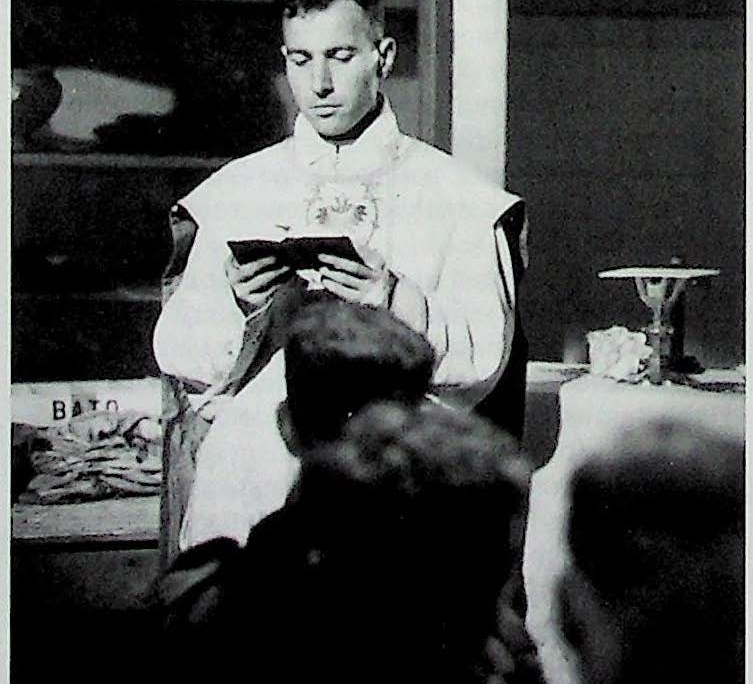 August/September 1945. Father Dijker during filming of ‘Theirs is the Glory’ in Hotel De Tafelberg.
August/September 1945. Father Dijker during filming of ‘Theirs is the Glory’ in Hotel De Tafelberg.
(photo: R. Voskuil Collection)
When a British Rank Organisation film crew aighted in Oosterbeek in 1945 to shoot scenes for the film ‘Theirs is the Glory’, Father Dijker was asked if he would take part in this reconstruction of the Battle of Arnhem. After some hesitation he agreed, and so a very young Father Dijker is to be seen in the film, saying Mass in the kitchen of the Tafelberg Hotel. Some time later he left for Indonesia where he remained as a missionary for more than 25 years. On his return to the Netherlands he went to live in Nijmegen, and almost every year thereafter this genial cleric was present at the service in the Airborne Cemetery.
Father Dijker was buried on 2 August in the churchyard of the Heilig Landstichting (Holy Land Foundation) at Nijmegen.
(Robert Voskuil)
Rectification
Unfortunately, the Tn Memoriam’ article included in the previous issue of the Newsletter contained an annoying typing error. The surname of the deceased person mentioned in the article is Roell, not Roell. We apologise for this error.
Excursion to Hamminkeln on 4 October next
As already mentioned, our Society is organising an excursion to the area around Hamminkeln in Germany on Saturday October 4 next. It is here that the last large allied airborne operation of the Second World War took place, on 24 March 1945.
The programme for the day is as follows: 09.00 hours: Departure by bus from the car park at the Goede Herderkerk in Oosterbeek, corner of J.J. Talsmalaan and Utrechtseweg.
10.15 hours: Arrival in Hamminkeln.
10.30-13.00 hours: Battlefield tour to a selection of places that played an important role during and after the landings.
13.00-14.00 hours: LUNCH.
14.00-16.30 hours: Continuation of the battlefield tour. Here we will follow in the footsteps of the famous American war photographer Robert Capa, who took an impressive series of photos of the landings of parachutists of the 17th US Airborne Division and the subsequent fighting.
The battlefield tour costs € 25 per person, which includes the bus journey, lunch and an excursion guide. Payment must be made by 27 September next at the latest, and bookings will be dealt with in order of receipt. There is a maximum of 48 places available and, in the event of over subscription, you will only be notified if you CANNOT be accommodated.
Theme afternoon on 22 November
Our Society is organising a theme afternoon to be held in the Concert Hall in Oosterbeek on Saturday
22 November next.
The programme is as follows:
13.30-14.00 hours: Reception of the members.
14.00-15.00 hours: Talk by Mr W. Boersma, director of the Airborne Museum, on the radio communications during the Battle of Arnhem. 15.00-15.45 hours: BREAK.
15.45-17.00 hours: Continuation of Mr Boersma’s talk and, time permitting, the showing of a documentary.
Acquisition
Last July Jaap Korsloot and Wybo Boersma attended the ‘Airborne Day’ at the Yorkshire Air Museum in Elvington, Yorks, taking with them an Airborne Museum public relations and sales stand. Our museum received some exceptional objects from the Air Museum, the most interesting being a sleeve emblem of the ‘General Headquarters Liaison Regiment’ (‘Phantom’), a white ‘P’ on a black background. Some time ago the Airborne Museum managed to buy one of these very rare emblems. Now both emblems are attached to the uniform of a soldier in the Signal Corps diorama in the ‘Hartenstein’.
Phantom was a small unit whose job it was to report the progress of the battle directly to Field Marshal Montgomery’s headquarters. During the Battle of Arnhem the Phantom radio connection and that of the Public Relations Unit were the only ones to have good contact with the ‘outside world’. The soldiers of this unit did not wear the Pegasus emblem on their sleeves because they were not part of the 1st British Airborne Divisie.
Report on the ‘UK Weekend’
On Friday afternoon 20 June 2003 we gathered at the Schoonoord restaurant, leaving from there to visit the positions of 10 Battalion, The Parachute Regiment, in Utrechtseweg. We then went to the Airborne Cemetery and the Air Despatch monument, and then on to Dreijenseweg, where the route of advance of 156 Battalion, The Parachute Regiment, and the location of the German defence line were explained.
On Saturday we left Hartenstein for DZ ‘Y’, and from there we visited the Psychiatric Hospital complex in Wolfheze. While there we went to the cemetery where the victims of the allied bombing on 17 September 1944 are buried. Few of us had been there before. After an excellent lunch at the West End Hotel we made a walking tour of the Papendal National Sports Centre terrain, where the landings and fighting on Johannahoeve were explained as well as the role of 7th Battalion, the King’s Own Scottish Borderers. The rest of the afternoon was centred on the site where the Reconnaissance Squadron jeeps were ambushed, the tunnel under the railway embankment, Captain Lionel Queripel (The Royal Sussex Regiment, attached to 10 Battalion), who was awarded a posthumous VC, and ‘Hackett s Hollow’ (the large depression in the ground which Brigadier John Hackett and many of his men of 4 Parachute Brigade held for some hours).
Sunday 22 June we boarded Second World War army vehicles at the Hartenstein. First stop was LZ ‘S’ and the site where Flight Lieutenant David Lord’s Dakota crashed (David Lord was also awarded a posthumous VC). We then headed for Westerbouwing via LZ ‘Z’, DZ ‘X’ and the monument in Heelsum. At Westerbouwing our hosts produced a picnic lunch for us. The drive continued on to the Old Church, passing the Heveadorp ferry on the way. After this stop the column drove to Arnhem, across the John Frost Bridge, and then along the dike to Driel. This was the last excursion point, from where we returned to Oosterbeek.
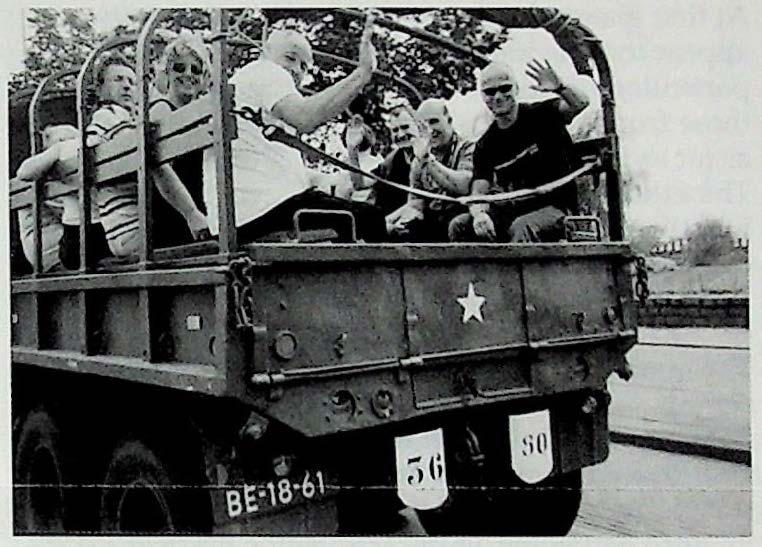 Sunday 22 June 2003. Participants in the UK Weekend being driven around in authentic World War II vehicles, (photo: Eugene Wijnhoud)
Sunday 22 June 2003. Participants in the UK Weekend being driven around in authentic World War II vehicles, (photo: Eugene Wijnhoud)
Our Dutch hosts accompanied us on our visits to all the above places, answering our questions and explaining the various excursion sites. We saw places for the first time, or from a totally different direction or perspective, generally when locked gates had been opened especially for us! We even found the remains of old slit trenches. The only disappointment, and this has nothing to do with the trip, was seeing the still-deplorable state of the partly demolished
Tafelberg.
One cannot thank our hosts enough for the time and trouble they went to in organising such an excellent weekend, with information packs, lunches, a reception at the Museum on the Friday evening, and WW II vehicles. We were even given a length of original parachute rigging line, recently retrieved from the Driel area.
Among the excursion leaders were Ben Kolster and Eugene Wijnhoud, chairman and vice-chairman respectively of the Friends’ Society, and Aad Groeneweg, vice-chairman of the Board of Trustees of the Airborne Museum. All in all an excellent trip, well organised, superbly led and a real pleasure to attend. I hope to be on the next trip and would recommend it to any of the UK members.
(Richard Graham, Guildford)
News from Niall
I would like to thank the members from the UK who supported our small trip to the battlefields in June. I thoroughly enjoyed myself, even if things didn’t always go to plan. But the weather was excellent and it was a very happy group.
1 have had several suggestions for 2005 and work will soon start in earnest on planning the schedule. I realise it is very early days yet, but if anyone has any questions about the battlefield tour in 2005, please get in touch with me.
(Niall Cherry)
Arnhem Operation Market Garden, September
At first glance this work by Lloyd Clark would appear to be of interest. The photographs in particular are good, both the wartime photos and those from more recent times. However, this is about as far as I can go in recommending the book.
The title itself is a bit strange as Lloyd Clark deals with the fighting in the entire Market Garden corridor rather than (as the title would suggest) at A rnhem / Oosterbeek.
The book contains no new information for the more serious student of the battle, but it does, in my opinion, include several rather unfortunate errors and contradictions. For example, on one page it is stated: ‘As a result Urquhart decided to take just six infantry battalions on the 17th, while his field artillery were to arrive on the 18th.’ A few pages later the statement ‘also arriving on 17 September,… two-thirds of his 75mm field artillery’ appears.
Clark also writes that on the 24th September a meeting was held at the St Elisabeth’s Hospital between Colonel Warrack (Assistant Director of Medical Services) and General Bittrich (Commander of II SS Panzer Corps). This differs from Warrack’s own account written at Apeldoorn soon after the battle in which he says the meeting was at Bittrich’s HQ. Errors also appear in some of the maps, notably of the bridge perimeter where the defensive positions at the Van Limburg Stirum School are not shown. In fact later in the book the building is referred to as the ‘van Lunburgstirum school’.
1 was also concerned to see that Clark mentions 3,910 men as having been evacuated from the perimeter during Operation Berlin. This figure is certainly the highest number I have ever come across, most accounts agreeing on a total of around 2,400. The official figure is 2,398.
1 would have expected something better from someone who is ‘a Senior Lecturer in the Department of War Studies al the Royal Military Academy Sandhurst where he specialises in the history of airborne warfare’. Perhaps the best thing to say about the book is that it gives the newcomer to the battle a useful overview of ‘Market Garden’.
‘Arnhem Operation Market Garden, September 1944’, by Lloyd Clark, is published by Sutton Publishing Limited, ISBN 0-7509-2835-2. The price in Britain is £ 25, and at the Airborne Museum in Oosterbeek € 42.
(Niall Cherry)
Information board at Ginkel Heath
An information board has been placed near the monument on Ginkel Heath where the 4th Parachute Brigade landed on 18 September 1944. The board was provided by the Ede VVV on the initiative of the Ede council and with support from the Airborne Museum.
The board gives a short account, in Dutch and English, of the events that took place there on 17 and 18 September 1944. Those requiring further information are referred to the Airborne Museum and the museum website. Many tourists visit the monument and the nearby sheep shed during the summer months, so the board represents an excellent free advert for the Airborne Museum.
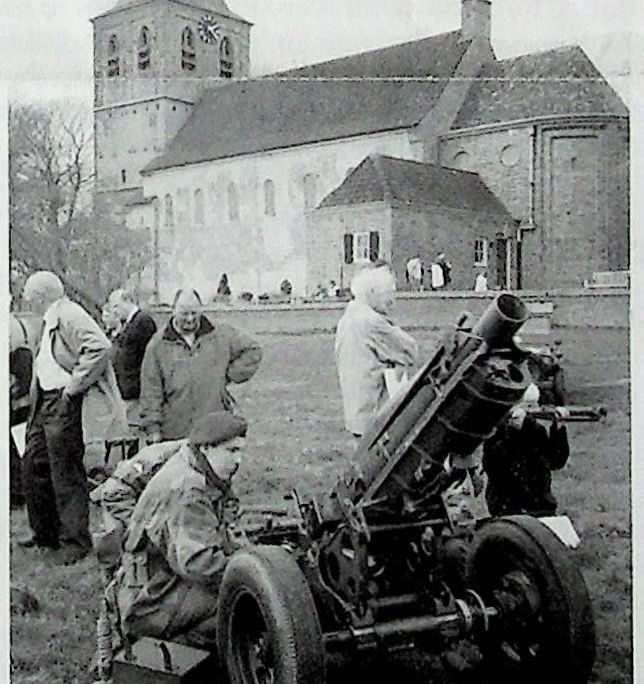
A 75-ium gun was set up in one of the original locations in the flood plains behind the church as part of the excursion on 29 March last. The excursion focused on the positions of the Light Regiment Royal Artillery near the Old Church in Oosterbeek.
(photo: Bob Gerritsen)

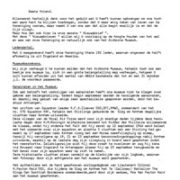
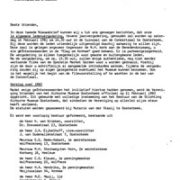
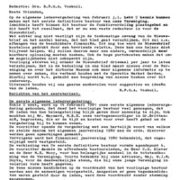
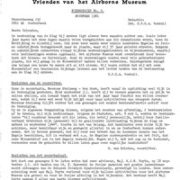
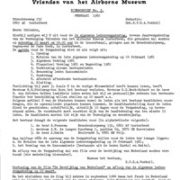
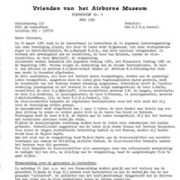
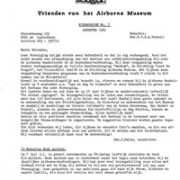
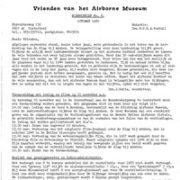
Plaats een Reactie
Vraag of reactie?Laat hier uw reactie achter.